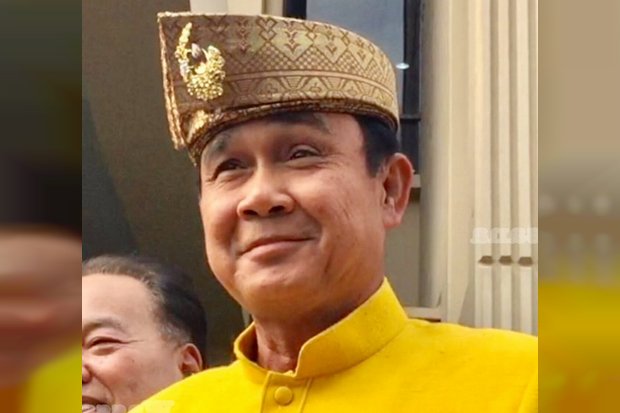
India took exactly 25 years to define its place in the broader Asia region. When Indian prime minister Narasimha Rao first outlined his country's "Look East" policy in 1993 in Singapore, economic imperatives were the main driving force and not much thought was given to strategic components. After all, it was before the rise of China, the decline in US influence, Japan's strategic-oriented foreign policy and the establishment of the Asean Community.
Last week, in the keynote speech at the Shangri-La Dialogue, Asia's annual security conference, also in Singapore, Indian Prime Minister Narendra Modi revitalised the staid, almost-three-decades-old policy with a more dynamic and holistic approach. From now on, India is no longer merely content to look east; for the world's largest democracy has now come out of its shell. Judging from the details of the Indo-Pacific policy outlined by Mr Modi, it is succinctly clear that India wants to be treated as a global power that can reinforce and sustain the liberal international order. In addition, it wants to be perceived as a net provider of peace and prosperity in this part of the world.

Kavi Chongkittavorn is a veteran journalist on regional affairs.
Indeed, Mr Modi's address hit the right note, especially the part referring to Asean. Mr Modi had an early start. At the end of January, Asean leaders came to New Delhi to attend India's Independence Day celebrations and held a special session on the side-line of the gathering to discuss the emerging Indo-Pacific concept.
"Modi was the only leader that spent time with Asean leaders to discuss the Indo-Pacific," said a senior Asean diplomat who attended the Delhi meeting. "He knew what Asean wanted," added the diplomat who doesn't want to be named.
At the time, the details of their discussion were not publicly reported, as both India and Asean were still working on common positions as to the nature and scope of the Indo-Pacific.
Currently, both the US and Japan use the full catchphrase, the "Free and Open Indo-Pacific". But India prefers the simple term Indo-Pacific, worrying that the words "free and open" could be problematic and misinterpreted as a long-term interventionist policy that could undermine its Southeast Asian neighbours. Some Asean members view the term negatively as an ideology-based approach with domestic and international implications.
"The ten countries of Southeast Asia connect the two great oceans in both the geographical and civilisational sense. Inclusiveness, openness and Asean centrality and unity, therefore, lie at the heart of the new Indo-Pacific," reiterated Mr Modi.
By far, his statement has been the strongest among the leaders of great powers referring to Asean centrality in the Indo-Pacific framework. After all, he mentioned Asean 20 times in his keynote speech.
"Asean unity is essential for a stable future for this region. And each of us must support it, not weaken it," he said. Essentially, Mr Modi has a clear message to Asean -- India's future and leadership is embedded in Southeast Asia and greater Asia.
"Southeast Asia is at its centre. Asean has been and will be central to its future. That is the vision that will always guide India, as we seek to cooperate for an architecture for peace and security in the region," added Mr Modi.
In 2003, India surprised Asean by acceding to the 1976 Treaty of Amity and Cooperation in Southeast Asia, the first country along with China to sign up to the regional code of conduct, which quickly transformed New Delhi into one of the group's most valued strategic partners. Over four decade later, 33 countries are signatories including the US, EU, China, Russia and Chile, among others.
In the middle of his speech, he asked empathically whether, in a fast-changing world with competition and division among nations, there was an organisation that could loop in all sides to work together. His answer was very succinct, stating that Asean can, as it represents "the greatest level of diversity of culture, religion, language, governance and prosperity of any grouping in the world".
He also included India's cooperation with Asean-led mechanisms such as the East Asia Summit, Asean Regional Forum, and the Asean Defence Ministers' Meeting-Plus. Specifically, he touched on two key sub-regional groupings in which India is a major player -- the Bay of Bengal Initiative for Multi-Sectoral Technical and Economic Cooperation and the Mekong-India Economic Corridor. Thailand is also very active and working closely with India and other Southeast Asian countries within these two groups.
Similar to Japan's version of the Indo-Pacific, India's strategy also includes Africa, which is considered the new global economic growth area. Obviously, India and Japan, as the region's major democratic nations, have been in close consultation and working together to ensure their visions were congruent with one another. One megaproject that the two countries have already initiated is the so-called Asia-Africa Growth Corridor, which was launched last year. Its main objective is to develop infrastructure and digital connectivity in Africa and Asia through India and Japan cooperation.
Apart from Asean centrality as one of the six key elements, Mr Modi also envisaged the Indo-Pacific strategy as a rules-based international order, which means it must be free, open and inclusive. These principles "must equally apply to all individually as well as to the global commons" and not "directed against any country".
As in Japan's vision, India gives importance to freedom from coercion by other states and freedom of navigation and overflight. Free trade and connectivity are also their common priorities. India and Japan are members of the Regional Comprehensive Economic Partnership, the Asean-led free trade bloc that will be concluded next year.
Now with his 3,338-word statement, Mr Modi must redouble his efforts to act and lead India to forcefully implement these outlined visions.
